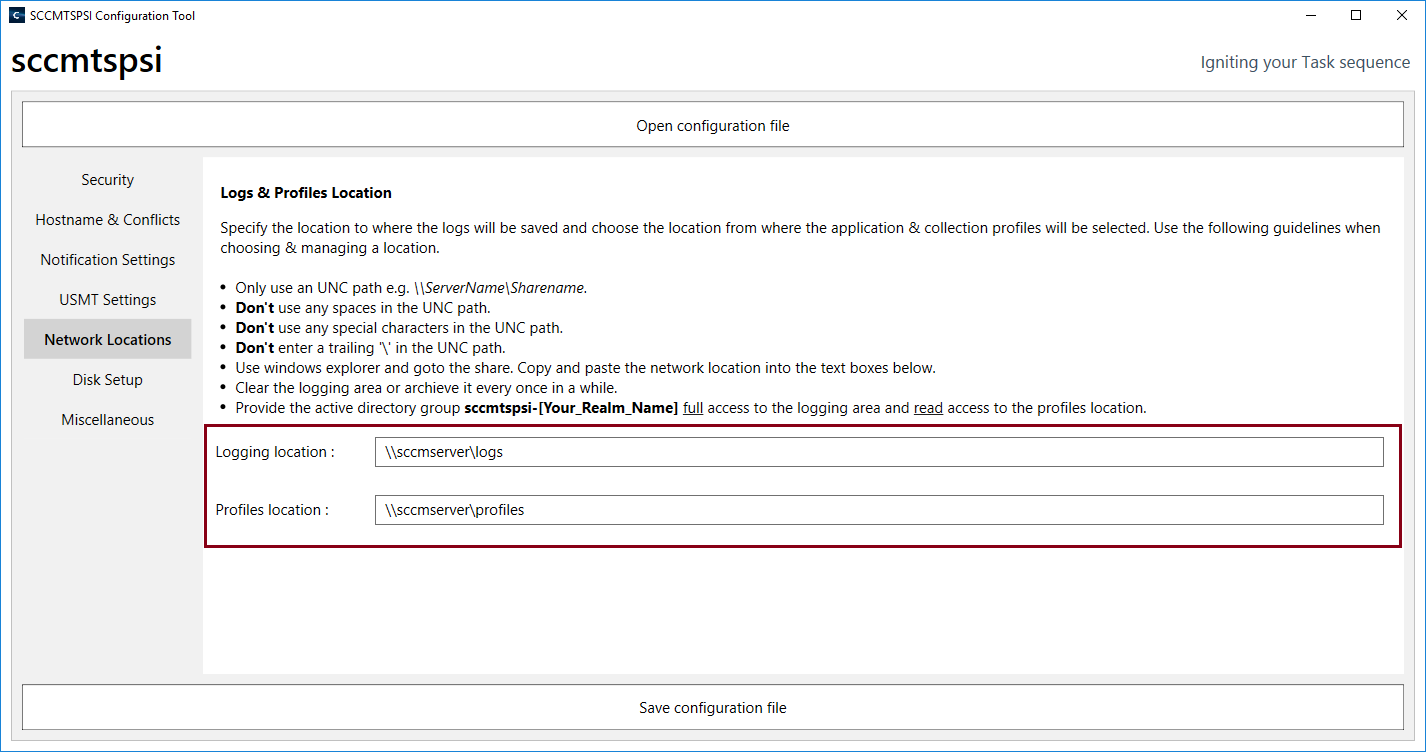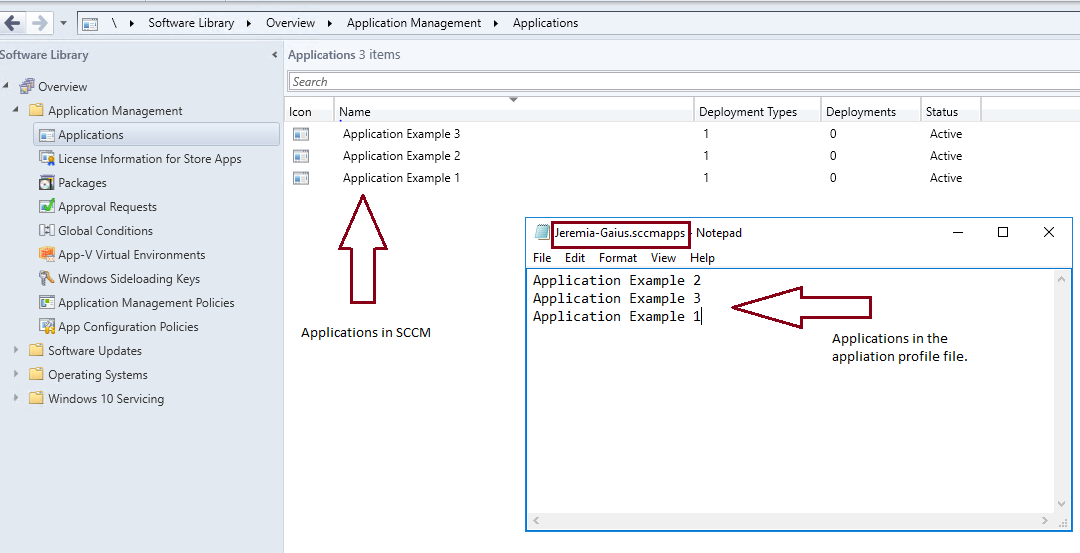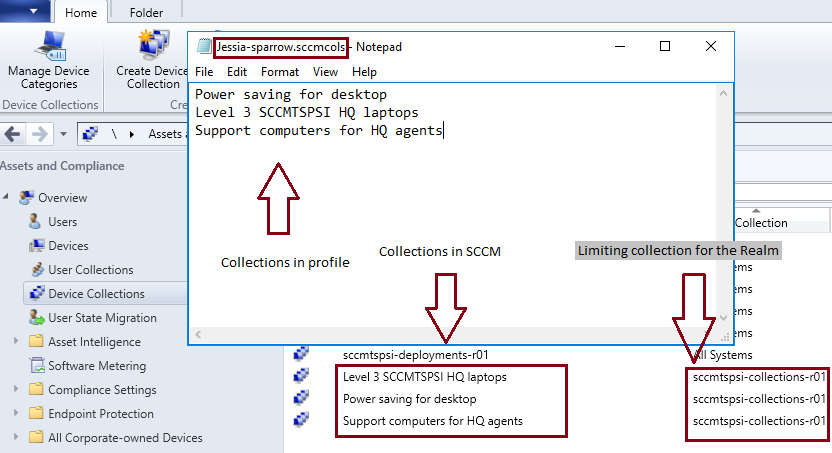
- Overview
- Realm setup
- Active Directory & SCCM setup.
- Active directory - Security group
- Active directory - Broker account
- SCCM - Deployment collection
- SCCM - Administrative category for applications
- SCCM - Administrative category for office
- SCCM - Limiting collection for collections
- AD - Parent AD group for AD group list
- AD - Staging OU
- SCCM - Configuration directory
- SCCM - WinPE boot image setup
- Configuration tool & File
- Realm secret key
- Allowed WinPE instances
- Network access account
- Notification account
- Hostname formatting
- Automatically identify hostname
- Overrides
- Active directory staging OU
- MBAM Server details
- SMTP server details
- Notification types
- User state migration (USMT)
- Logs and Profiles location
- Disk setup
- Content availability check
- Error adding collection member
- Error adding AD group member
- Wait for Bitlocker decryption
- Approved hardware
- Extension Attributes
- Using sccmtspsi (Operator view)
- Task sequence steps
- Task sequence error codes
- sccmtspsi error codes
4.13.Logs and Profiles location
Specify the location to where the logs will be saved and choose the location from where the application & collection profiles will be selected.
 Logging location : All logs will be copied to this network location on Failure (within sccmtspsi) , Success (within sccmtspsi) and when the sccmtspsi-copylogstonetwork application is run during the task sequence.
Logging location : All logs will be copied to this network location on Failure (within sccmtspsi) , Success (within sccmtspsi) and when the sccmtspsi-copylogstonetwork application is run during the task sequence.
Logging location permissions :
- Provide the Realm broker account “sccmtspsi-broker-r01” [where r01 is the Realm name] read and write access to the logs location [Share and NTFS].
- Provide the Network access account read and write access to the logs location [Share and NTFS].
- Provide administrators read and write access to the logs location [Share and NTFS].
Profiles location : There are two types of profiles. Application profiles and Collection profiles. Create sub-folders for each type.
- Application profiles – This location contains text files with a “.sccmapps” extension; Each file contain a list of SCCM application names.

- Collection profiles – This location contains text files with a “.sccmcols” extension; Each file contain a list of SCCM collection names.

Profiles location permissions :
- Provide the Realm broker account “sccmtspsi-broker-r01” [where r01 is the Realm name] read access to the profiles location [Share and NTFS].
- Provide administrators read and write access to the profiles location [Share and NTFS].
The profile creation is discussed in detail in another section.